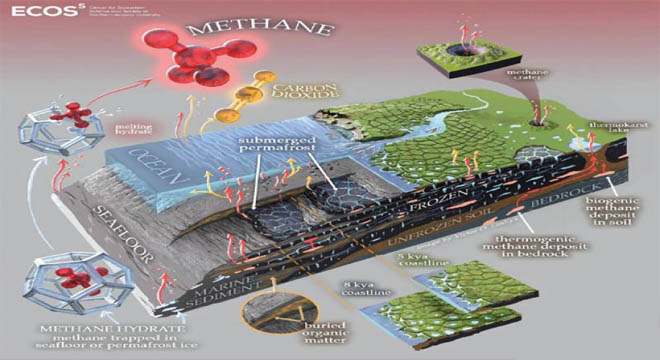Islamabad-In the far north, the swelling Arctic Ocean inundated vast swaths of coastal tundra and steppe ecosystems. Though the ocean water was only a few degrees above freezing, it started to thaw the permafrost beneath it, exposing billions of tons of organic matter to microbial breakdown.
The decomposing organic matter began producing CO2 and CH4, two of the most important greenhouse gases. Though researchers have been studying degrading subsea permafrost for decades, difficulty collecting measurements and sharing data across international and disciplinary divides have prevented an overall estimate of the amount of carbon and the rate of release.
A new study, led by Ph.D. candidate Sara Sayedi and senior researcher Dr. Ben Abbott at Brigham Young University (BYU) published in IOP Publishing journal Environmental Research Letters, sheds light on the subsea permafrost climate feedback, generating the first estimates of circumarctic carbon stocks, greenhouse gas release, and possible future response of the subsea permafrost zone.
Sayedi and an international team of 25 permafrost researchers worked under the coordination of the Permafrost Carbon Network (PCN), which is supported by the U.S. National Science Foundation. The researchers combined findings from published and unpublished studies to estimate the size of the past and present subsea carbon stock and how much greenhouse gas it might produce over the next three centuries.
Follow the PNI Facebook page for the latest news and updates.








